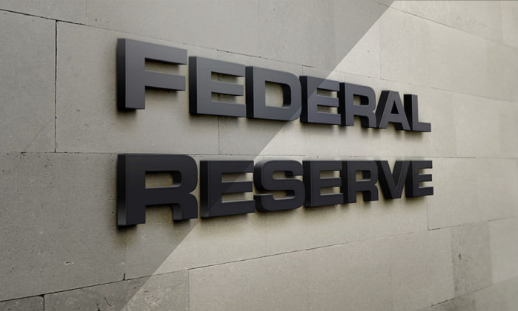Why The Fed Is Bluffing

The Federal Reserve is in quite a pickle. Inflation is heating up, as evidenced by May’s 5% annualized inflation rate (according to dubious official numbers).
Economists assure us that these price hikes are “transitory” — i.e., not permanent.
And Fed officials claim that they’ll start raising interest rates in 2023.
Federal Reserve officials signaled on Wednesday that they expected to raise interest rates from rock bottom sooner than they had previously forecast and that they were taking baby steps toward reducing their vast bond purchases —tweaks that, together, demonstrated their increasing confidence that the economy would rebound robustly from the pandemic.
So the Fed is thinking about maybe raising rates in two years. And The New York Times says this demonstrates their growing confidence that the economy will rebound from the pandemic.
That’s the official story. Here’s my take on what’s actually happening.
Feeling the Heat
The Fed is feeling pressure from rising inflation. It should be raising interest rates right now. But it can’t because there’s too much debt and leverage in the system.
So it says it’ll raise interest rates in 2023 — when there will be trillions of more dollars in debt on the pile.
I’m not buying that.
I think the Federal Reserve and the U.S. government need inflation. As I’ve covered here many times before, inflation is the easiest way to deal with a huge pile of unpayable debt.
If inflation runs at 10% for five years, all of a sudden our debt looks a lot smaller compared to our GDP.
This is about the same strategy that was used in the 1940s. A lot of money was printed to pay for World War II, resulting in inflation. At the same time, the Federal Reserve “capped” interest rates at artificially low rates.
One of my favorite writers, Lyn Alden, shared a great chart that shows the yield on 10-Year U.S. Treasury bonds against inflation during the 1940s. Despite the crazy fluctuations in inflation, the yield for bonds was essentially a flat line.
A central bank can suppress long-term yields and override market forces with yield curve control if they are willing to sacrifice the value of their currency. Like the 1940s: pic.twitter.com/Ygtj96UmGA
— Lyn Alden (@LynAldenContact) April 4, 2021
Who got hurt most? Bond owners.
Another fascinating chart from Lyn shows how bond owners were devastated by inflation in that same time period.
Fed officials are being very clear. They want to boost inflation and cap Treasury yields below inflation, so that buy-and-holders of that debt lose on a real basis.
— Lyn Alden (@LynAldenContact) February 21, 2020
They did this in the 1940's; the only other time U.S. gov deb-to-GDP reached this high.https://t.co/sJ9SkXqrcI
Where the nominal growth on these 10-year bonds should have been a positive gain of around $2,400, in reality, bond owners actually lost $2,700.
This is one reason why I really don’t like bonds and don’t own any. They pay nothing and are extremely vulnerable to inflation. And if interest rates go up, they lose tons of value.
Will the next decade play out like the 1940s? It’s certainly possible. The Fed cannot realistically let interest rates rise. And government spending is a worse problem than ever. This period could be the 1940s on steroids.
The alternative is 1970s-style rate hikes, which are essentially impossible today. There’s too much debt. The system would implode, a third of companies would likely go bankrupt, and a 1929-style crash would likely ensue.
The Path of Least Resistance
Inflating away the debt is the path of least resistance. Even if inflation gets out of control for a while, I think the Fed has to stay the course. The alternative is basically 1929 — but much worse.
One important caveat. At times, I suspect the Fed will “attempt” to raise rates and reduce quantitative easing (QE). And the stock market will not react well to that.
After stocks tank, the investment world will demand the Fed throw gas on the QE fire and send rates back to near zero. While a pretty nasty correction might happen first, I think the Fed will eventually oblige.
Until then, the Fed continues to bluff about how it plans to handle inflation. I think these bluffing periods can be excellent buying opportunities for inflation hedges such as gold and bitcoin.
In fact, you could say we’re in one of these Fed bluffing periods right now. A lot of people actually believe that the Fed is going to normalize in 2023. So they’re selling gold and silver and bitcoin. If you haven’t developed a hedge yet, now is an excellent time to start.
Disclaimer: Read our full disclaimer here.




Of course that rising inflation rate steals from all of those folks who can't immediately increase their income to compensate for it. So really it mostly benefits the banks. We need the interest rate to be increased last year, and then explain to the government that their spending must be limited to its income. No more free credit.
I realize that living within one's means is a radical concept, but some of us have been doing it for many years.